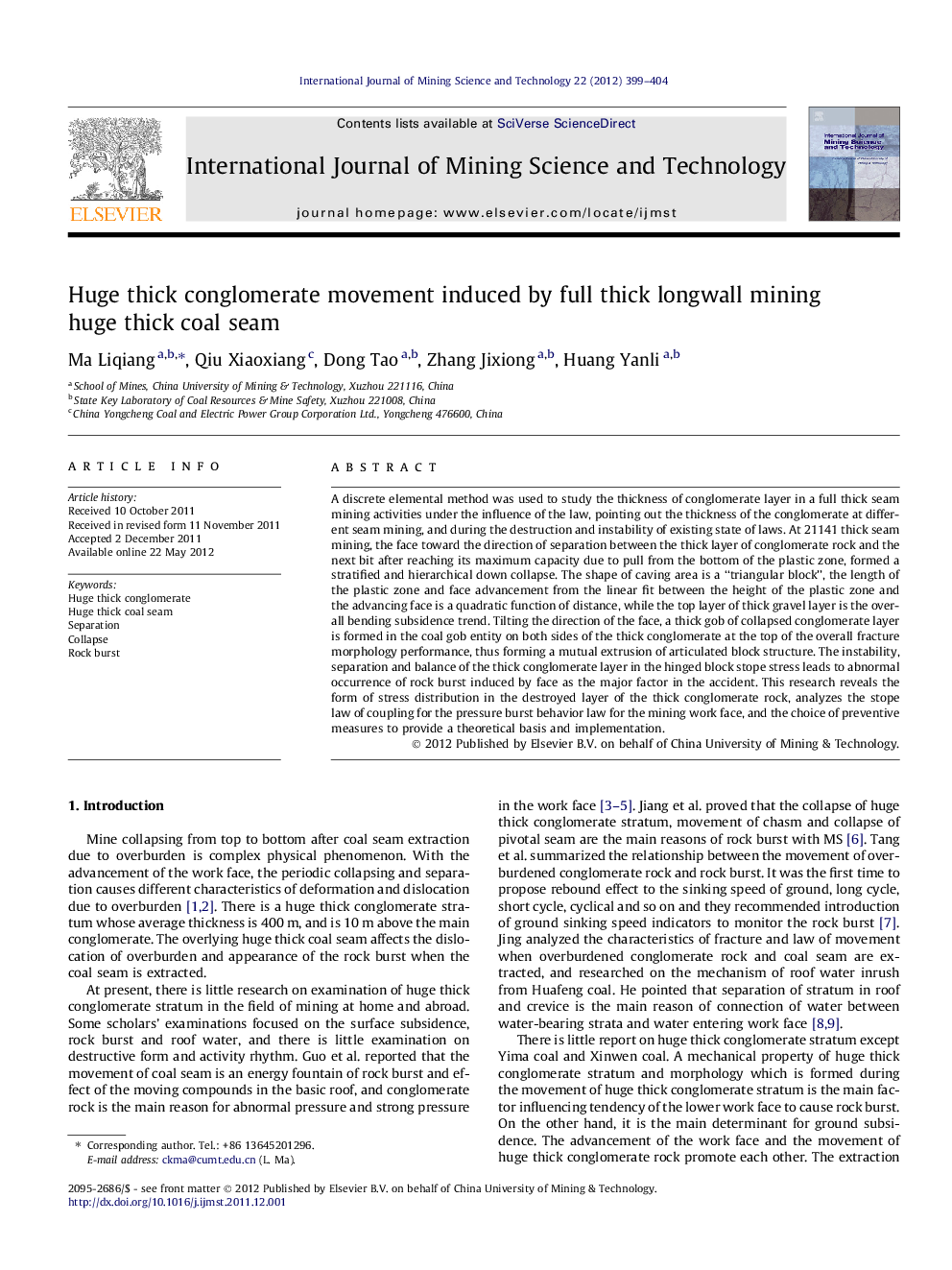| Article ID | Journal | Published Year | Pages | File Type |
|---|---|---|---|---|
| 276288 | International Journal of Mining Science and Technology | 2012 | 6 Pages |
A discrete elemental method was used to study the thickness of conglomerate layer in a full thick seam mining activities under the influence of the law, pointing out the thickness of the conglomerate at different seam mining, and during the destruction and instability of existing state of laws. At 21141 thick seam mining, the face toward the direction of separation between the thick layer of conglomerate rock and the next bit after reaching its maximum capacity due to pull from the bottom of the plastic zone, formed a stratified and hierarchical down collapse. The shape of caving area is a “triangular block”, the length of the plastic zone and face advancement from the linear fit between the height of the plastic zone and the advancing face is a quadratic function of distance, while the top layer of thick gravel layer is the overall bending subsidence trend. Tilting the direction of the face, a thick gob of collapsed conglomerate layer is formed in the coal gob entity on both sides of the thick conglomerate at the top of the overall fracture morphology performance, thus forming a mutual extrusion of articulated block structure. The instability, separation and balance of the thick conglomerate layer in the hinged block stope stress leads to abnormal occurrence of rock burst induced by face as the major factor in the accident. This research reveals the form of stress distribution in the destroyed layer of the thick conglomerate rock, analyzes the stope law of coupling for the pressure burst behavior law for the mining work face, and the choice of preventive measures to provide a theoretical basis and implementation.
